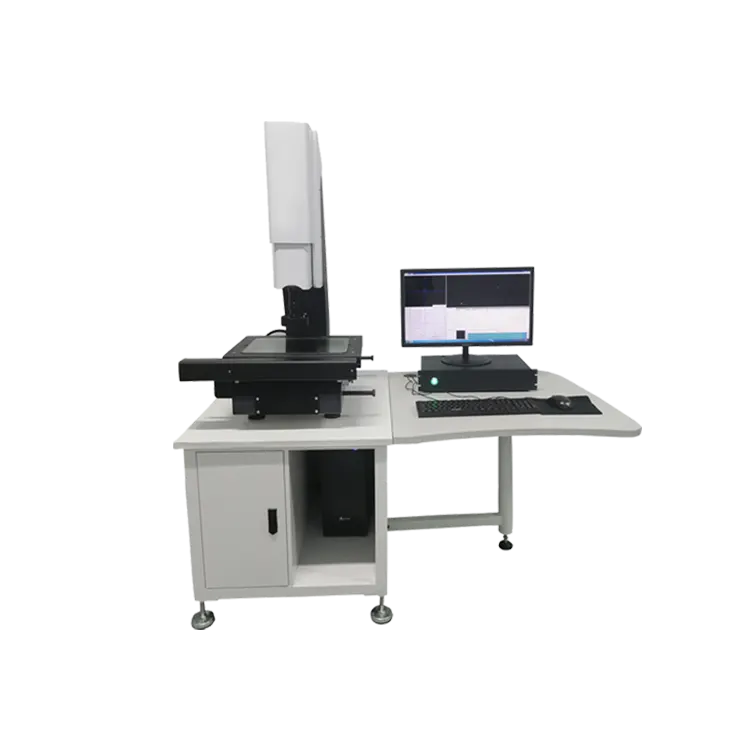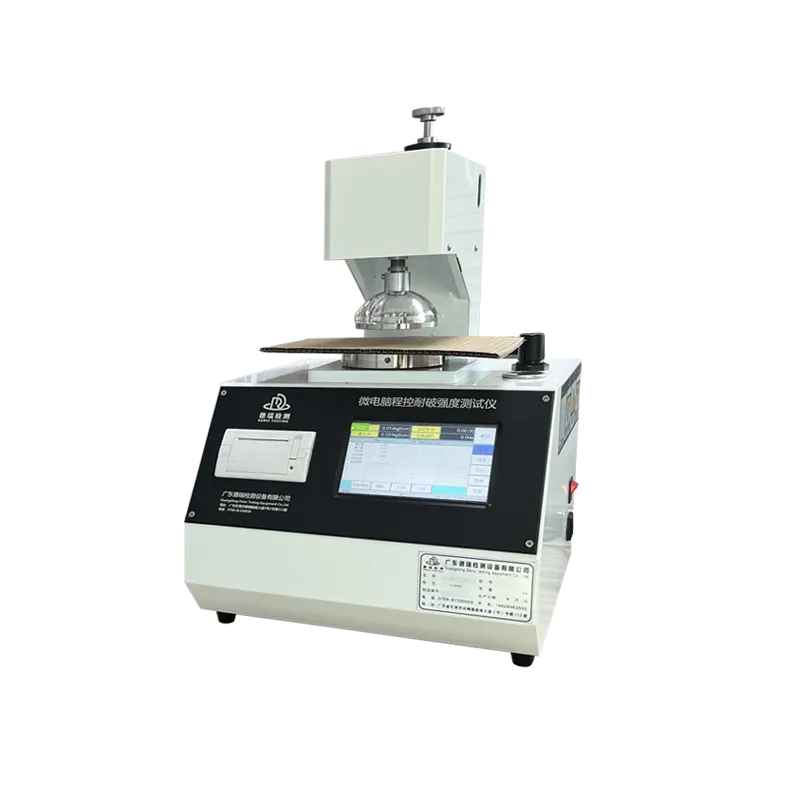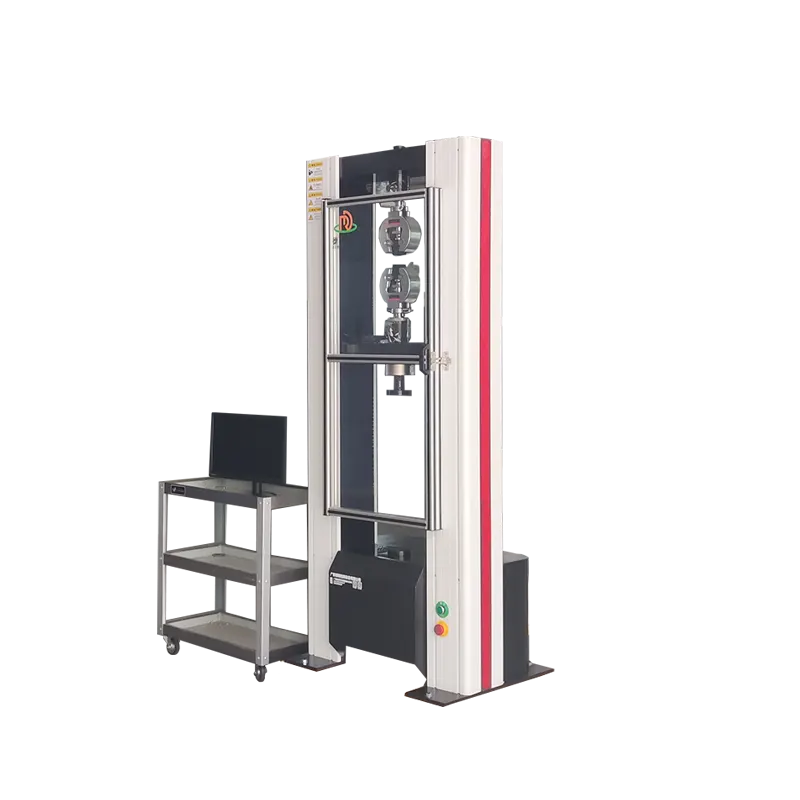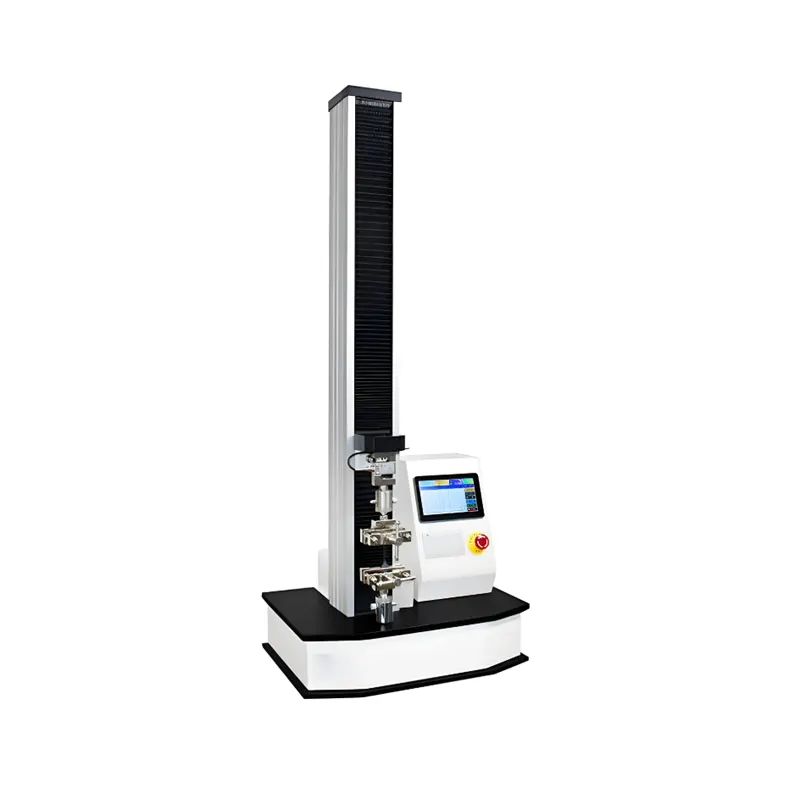The peel force testing machine is specifically designed for performance tests such as peel force, tensile force, tensile strength, breaking force, and peak value of products like adhesive tapes, self-adhesive labels, and adhesives. It can save test data and results and has necessary functions such as curve display and query. The peel force testing machine adopts an integrated structure of servo motor and speed regulation system to drive the synchronous belt reduction mechanism, which then drives the screw pair for loading. The electrical part consists of a load measurement system and a deformation measurement system. All control parameters and measurement results can be displayed in real time on the large screen LCD. It also has functions such as overload protection and displacement measurement.
Peel Strength Tester - Key Features
- Auto Calibration: The system automatically calibrates measurement accuracy to ensure precise readings.
- Force-Displacement Calculation: Automatically computes the corresponding force value for any given displacement.
- User-Friendly Operation: Intuitive bilingual (Chinese/English) menu interface for effortless operation.
- Comprehensive Testing Capabilities: Supports tensile tests, elongation rate measurements, tear tests, peel tests, and more.
- Real-Time Dynamic Curve: Displays live force-displacement curves during testing for immediate performance monitoring.
- Automatic Data Display: Continuously shows real-time test force, peak value, and testing status throughout the entire process.
- Automated Control: Once test parameters are configured, the machine automatically executes the complete testing procedure.
- Fracture Detection: Automatically halts crosshead movement upon sample breakage to prevent damage.
- Dual Protection System: Equipped with both mechanical and programmable limit switches for enhanced operational safety.
Product Features
- Windows-based Platform:
- Parameters are configured via dialog boxes for intuitive operation.
- Single-Screen Operation:
- All functions accessible on one screen; no need for screen switching.
- Multilingual Software Interface:
- Supports Simplified Chinese, Traditional Chinese, and English with one-click switching.
- Customizable Test Reports:
- User-defined report formats; test data callable directly from the main interface.
- Multi-Curve Comparison:
- Supports parallel comparison of multiple curves via pan/zoom or overlay modes.
- Unit Flexibility:
- Multiple measurement units with seamless metric/imperial conversion.
- Automated Functions:
- Auto-return, auto-calibration, and auto-zoom for optimal graph scaling.
- Advanced Testing Capabilities:
- Customizable test methods and built-in data analysis tools.
Safety Features
- Stroke Limit Protection:
- Equipped with upper and lower limit switches to prevent exceeding preset travel range.
- Force Limit Protection:
- System-configurable maximum force threshold to prevent overload beyond sensor calibration range.
Peel Strength Tester - System Configuration
- Main Unit: 1 set
- Specialized Tensile Fixtures: 1 set
- Specialized Compression Fixtures: 1 set
- Domestic DC Servo Motor: 1 set
- DC Servo Speed Control System: 1 set
- Precision Reducer: 1 set
- High-Precision Load Cell: 1 pc
- Single-Chip Microcomputer Control System: 1 set
Installation and Maintenance of Peel Strength Tester
Installation Steps
- Site Preparation
- Select a level, vibration-free surface with adequate ventilation.
- Ensure ambient temperature: 10°C–35°C, humidity: ≤80%RH (non-condensing).
- Mechanical Assembly
- Place the main unit on the designated position and secure with anchor bolts (if required).
- Install dedicated tensile/compression fixtures as per test requirements.
- Electrical Connection
- Connect power supply (AC 220V±10%, 50Hz) to the designated terminal.
- Ground the equipment per local electrical safety standards.
- System Calibration
- Power on and initialize the system.
- Perform zero-point calibration and load cell verification using standard weights.
- Operational Verification
- Run a test cycle with dummy samples to confirm smooth motion and sensor response.
Maintenance Procedures
- Daily Maintenance
- Wipe the exterior with a dry cloth to remove dust/dirt.
- Inspect fixture alignment and tighten any loose components.
- Weekly Maintenance
- Check belt tension (if applicable) and lubricate moving parts with specified grease.
- Verify emergency stop and limit switch functionality.
- Monthly Maintenance
- Clean load cell and displacement sensors with isopropyl alcohol.
- Test overload protection by simulating 110% rated load (document results).
- Annual Calibration
- Send to authorized laboratory for force accuracy and displacement calibration.
- Replace worn components (e.g., belts, seals) as per wear indicators.


















